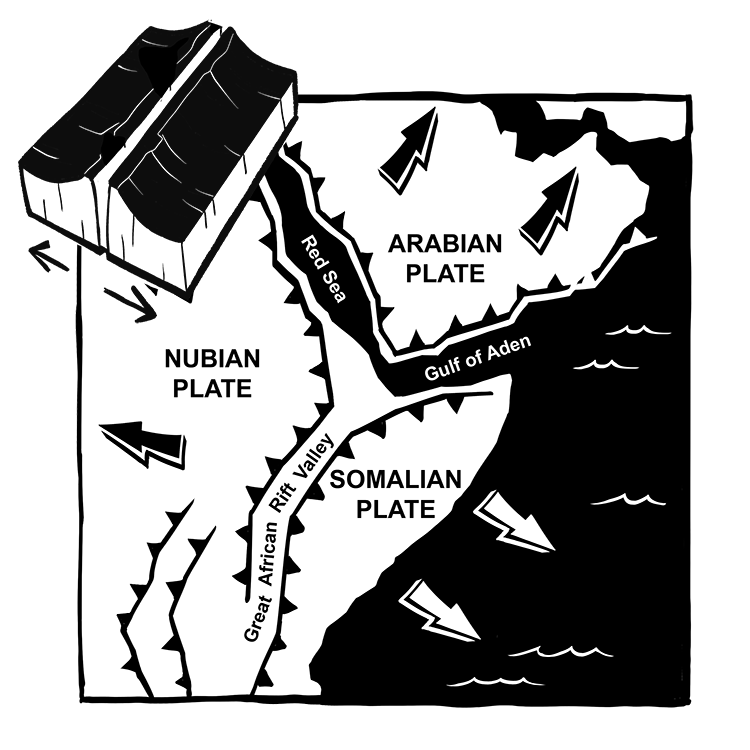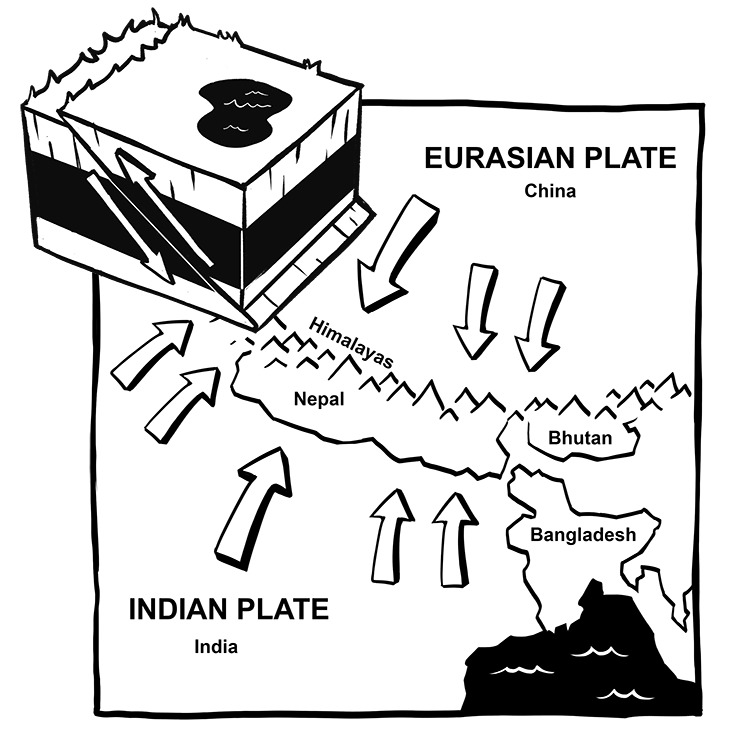What’s an Earthquake?
An earthquake happens when there’s a lot of stress inside the Earth’s crust (the outer layer of the Earth), and it needs to be released.
Now, you might be wondering where this stress comes from. The answer is from the movement of tectonic plates. The Earth’s crust is like a big puzzle made up of large and small pieces, which we call tectonic plates. These plates float on a squishy layer called the mantle and move around very slowly – about the same speed as your fingernails grow! Sometimes, these plates bump into each other and get stuck, causing stress to build up. When this stress is released, it creates waves that we feel as an earthquake.
Different Types of Cracks and Their Role in Earthquakes
Faults are like cracks in the Earth’s crust where most of the shaking happens. There are three main types of faults:
- Normal Faults: These happen when the crust stretches and one block of rock slides down compared to another. This type is common in areas where the crust is being pulled apart.
- Reverse Faults (or thrust faults): These happen when the crust is squished together, causing one block of rock to be pushed up over another. Reverse faults are common in areas where tectonic plates are colliding.
- Strike-Slip Faults: These happen when blocks of rock slide past each other sideways. The San Andreas Fault in California is a famous example of a strike-slip fault.



Most earthquakes happen along these fault lines. The Pacific Ring of Fire, an area around the Pacific Ocean, has lots of earthquakes because it has many faults.
How Do We Measure Earthquakes?
Scientists use special machines called seismographs to record earthquakes. These machines measure the waves created by an earthquake. The information they collect is used to figure out how strong the earthquake was and where it started.
The strength of an earthquake is called its magnitude. This is measured using the Richter scale, a system created by Charles F. Richter in 1935. On this scale, each increase by one whole number means the earthquake is ten times stronger and releases about 31.6 times more energy!
The epicenter is the spot on the Earth’s surface right above where the earthquake started. Most earthquakes begin less than 50 miles (80 km) below the Earth’s surface, but some can start as deep as 400 miles (640 km).
Even though earthquakes can be scary and cause damage, they’re a normal part of how the Earth changes and moves. By learning about earthquakes and the faults that cause them, scientists hope to get better at predicting these events and reducing the damage they cause.
